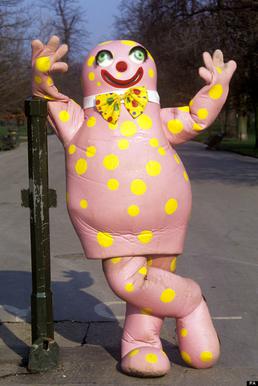If you are old enough to recall TV from the 1990s, you doubtless remember Noel Edmonds and the pink character with yellow spots called Mr Blobby which he introduced to viewers. Clearly, Mr Blobby still has his fans as you can see from this website https://www.mrblobbycollection.com/.

Mr Blobby even has a Wikipedia page https://en.wikipedia.org/wiki/Mr_Blobby Here is the image from that page:
Suffice to say, I do not seek to extol the virtues or otherwise of this icon of 90’s British humour, but would simply like to suggest that the human being is more “blobby” than perhaps you might think.
Don’t worry, this is not going to be a blog on the matter of expanding waistlines, rather it is about our true nature.
You see, our bodies appear solid, but this is somewhat an illusion as water makes up about 60% of our weight. Hydrogen and Oxygen are the elements of water (H2O), and these together with Carbon, Nitrogen, Calcium and Phosphorus add up to 99% of human body, the remainder being trace elements.
The human body comprises some 75 trillion cells apparently (who counted?) each of which doing what it needs to do: building; replicating; communicating; dying etc. Some cells last for just a few hours others for years, but no typical cell lives as long as a typical person. Unbeknown to us, our body is continually being replaced. It is estimated that it takes around 7 to 10 years to complete the make-over. Amazing!
So in fact we are more fluid than solid. Which is what brought the “blobby” term to mind.
The question is what happens when we get sick? Dr James Tyler Kent was a notable American homeopath working in the early years of the twentieth century, and his “Lectures on Homeopathic Philosophy” remain important to this day. In the first lecture he considers the “The Sick”. He notes that medicine is mostly concerned “with the ultimates”, that is to say the visible results of disease which, he argues, is only a part of the story.
It is “the real nature of man” that must also be considered, says Dr Kent. But what is this “real nature”?
Kent suggests that Man (in the generic sense) is “will and understanding” and the physical body is just the house in which he or she lives. Our “real nature” then is much more than the physical body, indeed our “will and understanding” may be what first and foremost needs attention before physical healing can take place.
Since Kent’s time science and technology has advanced our understanding of body biochemistry and delivered many new therapeutics. Yet the concept of “will and understanding” remains somewhat unexplored in mainstream medicine. How a person sees, feels and interacts with their world remains at the core of homeopathic practice, which is why it is termed holistic medicine.